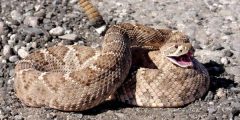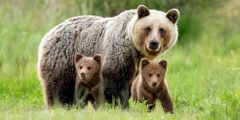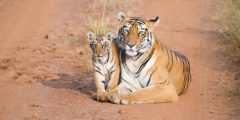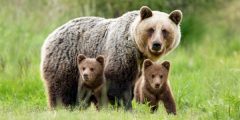Arabian wolf
The Arabian wolf was one of the most widespread mammals in the world, specifically in the desert and mountainous areas of Oman, Yemen, Jordan, the Kingdom of Saudi Arabia, and some areas in Egypt, but now its numbers have decreased significantly to the point of extinction, especially in Oman, Yemen, and the Kingdom. Saudi Arabia, due to its exposure to intentional poisoning by farmers and peasants when it attacks their livestock.[XNUMX]
Traits and specifications of the Arabian wolf
The Arabian wolf is characterized by a set of characteristics, which are:
Physical traits
The Arabian wolf is characterized by its small size and gray color. Its height is about 66 cm, and its average weight is approximately 18 kg. It has large ears compared to the size of its face and body, which is an important feature that helps it control and distribute its body heat.
The body of the Arabian wolf is covered with beige fur with shades of grey.[XNUMX] It is short and light in the summer, and heavier in the winter, except for the hair on its back, which remains long even in the summer. The Arabian wolf does not have any sweat glands, so it controls its body temperature through continuous and rapid panting, which helps it evaporate hot air from its lungs.
Adaptation
The Arabian wolf prefers to live and go out hunting in pairs, or in small groups consisting of only 3 to 4 individuals rather than large groups, but it has been seen several times in groups consisting of 12 individuals, ready to hunt its food and defend itself.
Read also:What is whale food?
food
Arabian wolves feed on any domestic animals, such as goats, for example, so farmers poison them or shoot them when they hunt sheep, and this is what led to their extinction. In addition, they feed on wild rabbits, rodents, deer, and ungulates that they find on their way.[XNUMX]
the behavior
The Arabian wolf is known for its inability to howl, and it loves to hunt at night. In addition, it digs burrows in the sand in the summer, to protect itself and its young from high temperatures. It is also characterized by its attachment and love for the place in which it lives, as it can fight for it. And defend it against members of other groups.[XNUMX]
Numbers and spread
Many decisions were issued banning the hunting of the Arabian wolf in Oman, which led to an increase in its numbers. However, in Iraq, its numbers are large and constantly increasing, and this represents a real problem for farmers and farmers in the rural areas there, as they fear for their livestock.
Read also:What is whale food?







